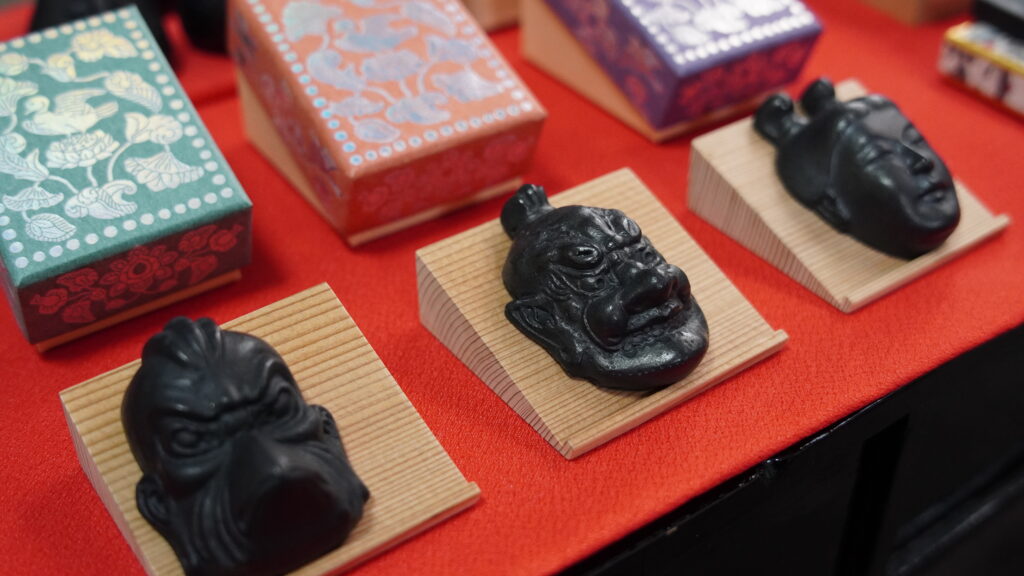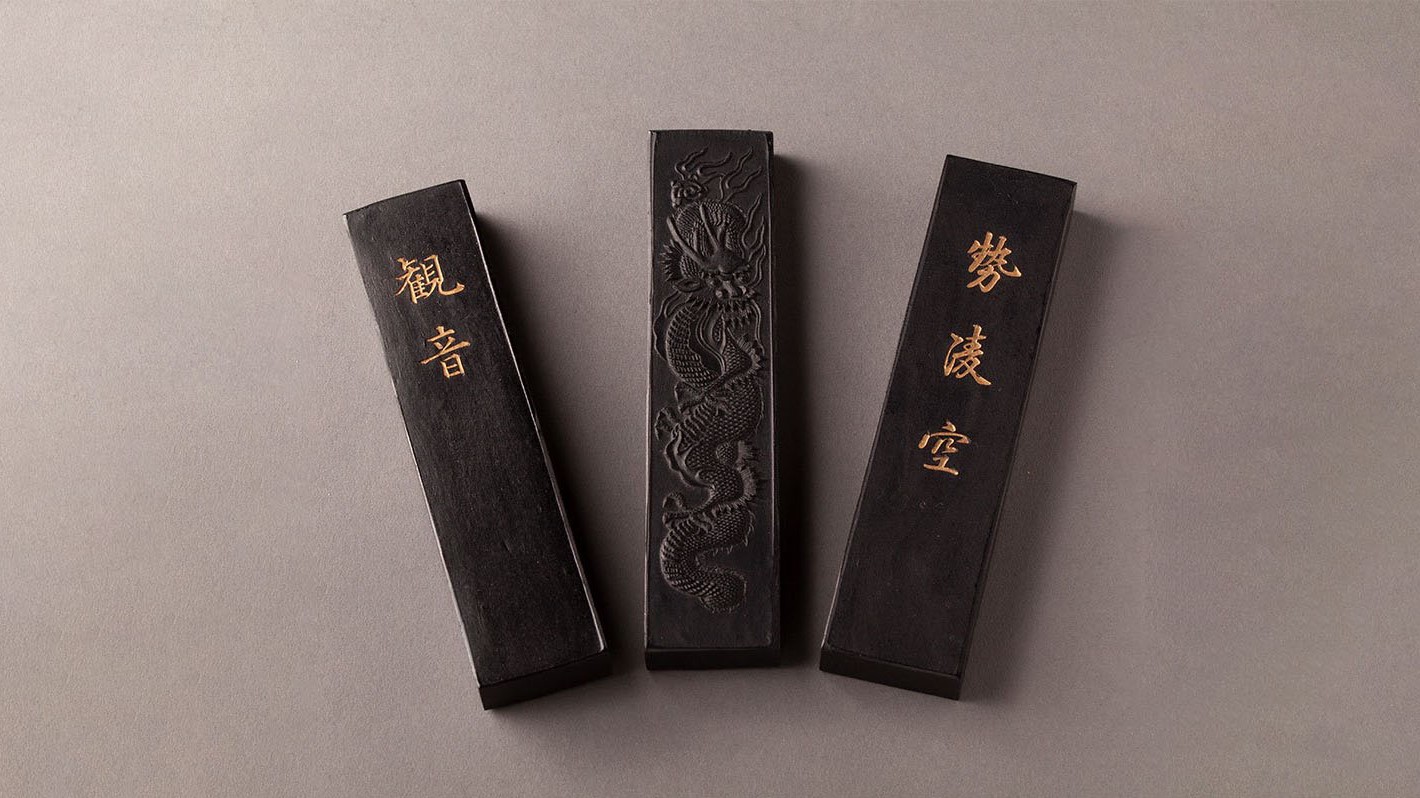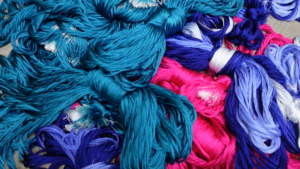Making Process of Nara Ink
Colored smoke
Put rapeseed oil or sesame oil in an earthenware vessel and insert a lamp wick. Light a fire and remove soot from the lid.


Dissolving glue and stirring raw materials
To dissolve glue evenly at a constant temperature, water and glue are placed in a kiln and stirred for about 4 hours. Then, soot and fragrance are added, stirred, and kneaded together.
※Glue is extracted from collagen, the main ingredient of animal skin and bones, by applying heat. It is also called “Gelatin”.
Wooden molding
Weigh out the raw ink to the specified size and put it into a wooden mold. It is important to knead slowly to prevent air.


Drying
Drying process is continued for a maximum of six months or longer. The raw ink, which contains much moisture, is wrap it in newspapers to dry and then buried in wood ashes. The ink is then dried naturally to a crisp finish.
Polishing
After drying, ash and impurities on the surface are removed, roasted over a charcoal fire, and polished with clam shells.


Coloring
We design letters, designs, and patterns one by one using gold and silver powders.
Characteristics of Nara Ink
For Japanese people, “sumi” (ink) is very familiar. When we are in elementary school, we had calligraphy classes, and I was often scolded by my parents for making my white T-shirt stained. The ink produced in Nara is called “Nara sumi” and hold a 95% share of the domestic market for solid sumi ink, and craftsmen have been using the same techniques for over 1000 years. The making of the craft can be done with very few machines, and most of the processes are still carried out by hands. The greatest characteristic of Nara ink is that the particles are uniform and contain no impurities. The inkstone and charcoal are smooth to the touch, and the color remains unchanged, making it the perfect craft for calligraphers with the impression of its luster and deepness. In addition, Nara ink is not only practical, but also artistic. Using an ink mold, it is decorated with designs of characters, dragons, plants, etc., and can be enjoyed in two ways: using it or seeing it.
Inherited in Nara for 1400 years
Ink was first introduced to Japan about 1400 years ago. According to the Nihon Shoki (Chronicles of Japan), ink came from China in AD 610. At that time, the capital was located in Nara, and the demand for sumi ink, which was used for copying sutras and writing documents, was very high. The location of Nara was ideal for the production of sumi ink, which is one of the main reasons why sumi ink production has flourished to this day. Even after 1400 years, the production process and craftsmen’s handiwork have remained unchanged, and the high quality of sumi ink has been passed down from generation to generation.
Nara Ink is not just for Writing!
As this article mentioned above, Nara sumi can be enjoyed in two different ways, but another characteristic of Nara sumi, “fragrance,” is becoming a trend. Kinkouen, which has been making Nara sumi for more than 100 years, produces three different shapes of sumi ink with a motif of masks used in Gigaku (an ancient musical performance).
Garuda : protection from bad luck
Gojo: soundness of body
Rikishi : beauty
Each has its own unique shape and story and is used as a good luck charm and gift. The mold for the fragrant ink is made by Ryudo Nakabo, Nara’s leading expert in making koraku masks. Nara sumi ink making is a masterpiece of the techniques of Kinkouen and Nara’s craftsmen.

Nara ink is not only for calligraphy, but can be enjoyed in three different ways: using, seeing, and smelling. Please visit the Suigenkyo online store for more information!

Suigenkyo Online Store
We offer a wide range of products including tableware, accessories, and interior design.
Suigenkyo YouTube
You can see the making process of the products listed on Suigenkyo Online Store.










